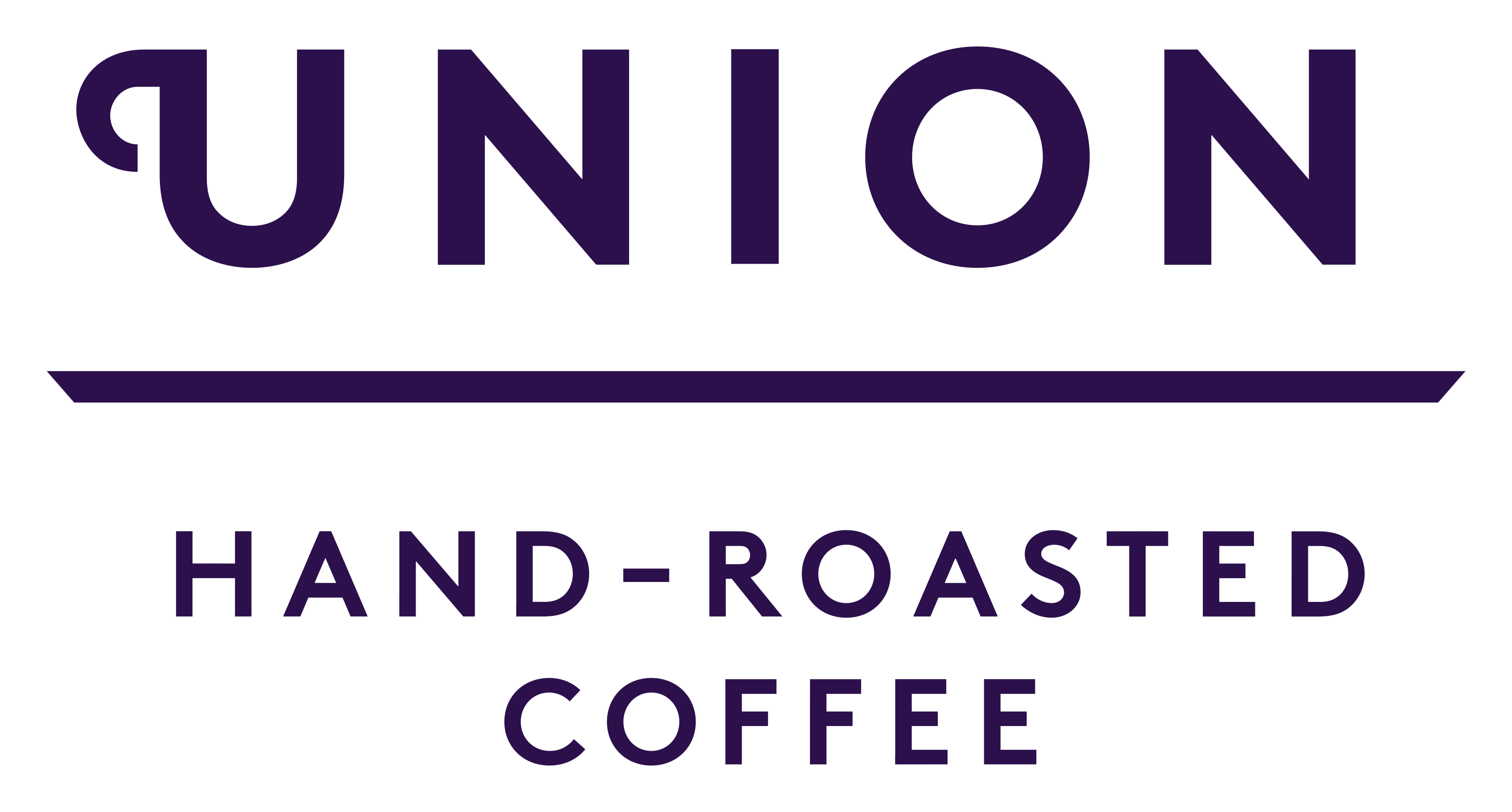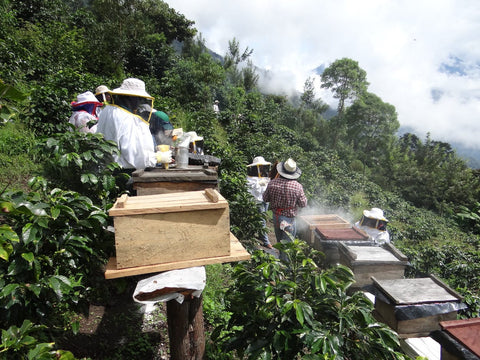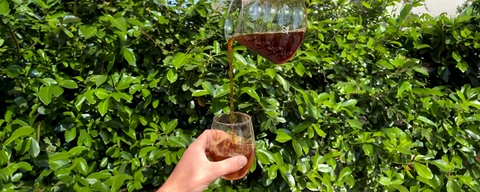When the world market price for coffee is low, farmers may abandon their farms, or replace their coffee by growing other more profitable crops. In Ethiopia, smallholder coffee farmers engaged in forest-based agriculture have limited non-agrarian opportunities to improve their livelihood, which may lead to forest removal to increase the available agricultural land. The solution to prevent this deforestation seems obvious; improve the per hectare income of smallholder coffee farmers. Could the production of high quality, higher value (specialty) coffee be a route to achieving this?
This was a question that we asked back in 2014, when Union Hand-Roasted Coffee together with the Royal Botanic Gardens, Kew, looked at the potential for establishing specialty coffee production with five coffee farmer cooperatives, situated within Yayu Coffee Forest Biosphere Reserve, in the Illubabor province of south-western Ethiopia. The Yayu forest reserve is an important reservoir for biodiversity, providing a home for many plant species including wild Arabica coffee and numerous mammals and birds. The coffee growing in this area is designated as forest coffee.
From the numerous workshops and anecdotal conversations that we had with Yayu coffee farmers, they were very aware of the intrinsic value of the forest, but if coffee farming were to be unprofitable then options for livelihood sustainability would undoubtedly include the removal of the coffee forest production system, to use the land for other agricultural activities.
Coffee quality is graded by sensory evaluation (taste and flavour) on the 100-point Specialty Coffee Association scale. Coffee scoring 80 points or above is defined as specialty coffee. (80-84.99 is graded very good, 85-89.99 is graded excellent, 90-100 is graded outstanding). When we first tasted (cupped) the coffee from Yayu in 2014 we realized that with specific interventions, this coffee had the potential to achieve an excellent quality.
However, great quality is not an accident and excellent tasting coffee does not just appear by a miracle. High quality coffee requires effort from coffee farmers who implement best-practice farming, harvesting, and processing methods. It requires high levels of quality control. Only mature, fully-ripened coffee fruits (known collectively as cherry, or cherries) should be harvested and processed, and the coffee needs to be carefully dried. To achieve our objective of producing high quality coffee, we instructed the coffee farmers in quality-control and how to source the materials required to construct raised African bed, to ensure correct drying, one of the key steps to achieving high-quality, export-ready coffee. 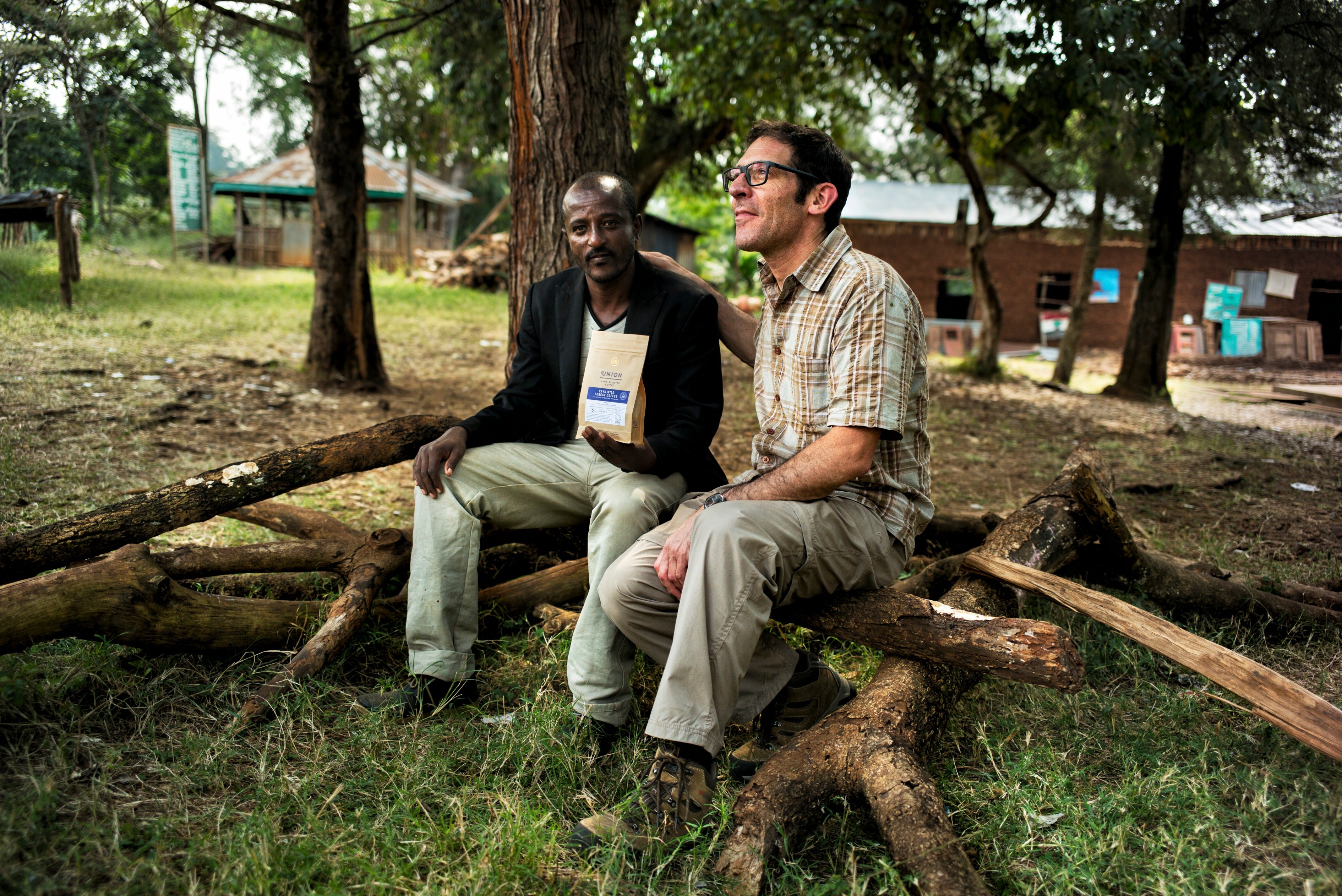
Over the five cooperatives involved in the project, coffee is grown by 950 smallholder farmers. To answer our question about whether producing specialty coffee could improve incomes, we created a schedule to learn about the socio-economic conditions of the community. We requested their consent to undertake a series of workshops and interviews (individual and small groups) from which we could evaluate impact. We learned that the average age of the coffee farmers in our study was 48, and that 88% of those interviewed were male. Almost one-fifth said they had not received any level of schooling or education at all; 47% reported not having a phone. The average yield of coffee was equivalent to 200 kg of exportable green coffee per hectare, per year.
Being on the ground and getting our boots dirty whilst visiting the farms to interview farmers, we were able to collect GPS data points which provided specific locations of the farms in the study. From this data, researchers at Kew (Aaron Davis and Justin Moat -- lead authors on the research) used satellite data to overlay the amount of forest canopy that covered the designated zones of the reserve and the coffee farms. Within the forest different levels of activity or intervention are permitted (or not). These zones range from the core area (no farming activity allowed), through the buffer and transition zones (coffee farming permitted) to the outer agricultural zone. Our results showed that these small-scale coffee farms retained 90% forest cover, compared to the 99% for the fully protected core area of the forest reserve. The coffee farms had significantly more favourable forest cover, compared to the Yayu agricultural zone (55% forest cover), and transition zone (78% forest cover). Through the project, farmer income increased by 30% above their earnings from non-specialty coffee, although the price that farmers received per kg of coffee cherry varied between the five cooperatives.
The route to achieving an increased income from specialty coffee production was not straightforward and extended far beyond providing farmers with knowledge and materials to ensure optimum harvesting, construction of drying beds, and undertake best-practice processing methods.
We have published the full study in an open-access journal (knowledge needs to be accessible!). A link can be found here.
As with most research papers the analysis is very detailed. The discussion addresses five caveats that get to the essence of why it is not just coffee quality alone that generates increased incomes. We have summarized some of the key findings. 
1) Management control is important.
Our study found that the farm-gate prices (i.e., price paid to farmers for freshly harvested coffee cherry) differed between cooperatives, even when cooperatives receive the same export price. This is an important finding, as it shows the limitations of a strategy that focusses only on paying higher export (Free on Board (FOB)) prices in order to increase income. With assistance to build more efficient and effective management at cooperative level, the greater the share of the increased export price flows back to the farmers.
2) Conversion rates need to be monitored and understood.
The value chain of coffee is complex. Freshly harvested coffee undergoes several processing steps to achieve export quality. The 6:1 ratio of fresh coffee cherry to exportable green bean is generally accepted (6 kg coffee cherry: 1kg green coffee for export). This is also referred to as the Green Bean Equivalent (GBE). In our study the conversion rate was much higher (from 8:1 to 11:1). There was a very high rejection of defects (coffee beans with faults), especially towards final stages of processing (milling, grading and sorting). This high rejection rate reduces profitability for farmers.
Our research paper does not explain in detail about the reasons for this high conversion rates. But we think several explanations are possible.
We provided training to coffee farmers about correct harvesting practices. Coffee trees produce a harvest of coffee that will be at different stages of ripeness (simply viewed as under-ripe, fully ripe, over-ripe). Previously, farmers would pick all the coffee from a tree in a single action, because it was fast, but this coffee contained a range of different ripeness and hence quality. Our training to farmers emphasised the importance of only picking perfectly ripened coffee in order to produce high quality coffee. However, harvesting fully ripened cherries is arguably more challenging in a forest coffee setting compared to a coffee garden or plantation, farming conditions where most specialty coffee is produced. Why is it more challenging? First, forest-grown coffee may be a significant distance from where the coffee is processed (i.e. the coffee washing Station). Co-operative management can overcome this problem by creating localised delivery stations. The number of these collection points varied amongst cooperatives.
Second, smallholder farmers are often engaged in several work activities that compete for time. Selectively picking only fully-ripened coffee cherries requires farmers to return back to their farm several times during the season (compared to strip picking all coffee in one go). This incurs risk, as coffee cherries may fall from the tree if weather conditions are adverse. For this reason, farmers may not see selective picking to be in their direct interest, especially if they do not recognize that there will be a financial benefit*. Finally, in the case of forest coffee, coffee trees are present at a very low density compared to a plantation, where trees are planted in orderly fashion and at high density. Much of the forestland is covered by established (non-coffee) forest trees. Harvesting in this terrain is more time-intensive and challenging compared to harvesting a plantation.
*Cooperatives work with a first and second payment system. Farmers receive a first payment when they deliver their coffee to the collection point. After export any profit is paid out to the farmers as a second payment or “dividend”. Normally cooperatives set the price of the first payment equal to the local market price. The second payment is where farmers get the ‘real benefit’ but they often do not have awareness of that at the time of picking because the second payment often comes several months later.

Not picking selectively may explain why harvesting fully-ripe coffee cherries in a forest coffee setting gives the high conversion ratio that we observed in this study.
From our many years’ experience working with coffee farmers, we know that selective picking is the best methods for producing high quality coffee. If this activity is difficult for farmers’ then there is a second best approach. Farmers continue with non-selective picking but a secondary sorting and selection process to remove immature (unripe) cherries is undertaken at the collection point or coffee washing station. During our training workshops at Yayu, we highlighted to the Cooperatives that they should firstly avoid mixing unripe with ripe coffee cherries, and secondly, only pay specialty coffee prices to their farmer members who delivered selectively picked fully-ripened coffee. Money is a powerful incentive.
We saw how farmers would benefit from learning about how different grades and qualities of coffee should be segregated for different market channels. High-quality selective picking earns a premium for specialty coffee production, Under/over-ripe can be sold through conventional export channels and at local markets. Transport to Addis Ababa, where milling and final processing is undertaken, adds further costs; coffee with defects that will never meet export requirements is best sold locally. The selling price is lower, but the overheads are lower, too.
Farmers need to continue to experience for themselves what benefits are achieved from the extra work of selective picking. By keeping accurate records of the quantity of cherries purchased and what quantity and quality of coffee this represents at different stages of processing, farmer organisation or cooperative management may achieve more accurate and improved conversion ratios.
3) Investment is necessary.
Initial and ongoing financial investments (for farmers and their cooperatives) are required to enter and maintain a position in the specialty coffee market. Cooperatives and farmers that desire to enter the specialty coffee market need to have access to finance. What comes first? To access the specialty market, farmers must invest; to invest, they must be making sufficient profit.
4)Direct Trade requires commitment in order to be effective
The project required a great level of commitment, not only from farmers, but also the buyer (yes, that would be us – Union Hand-Roasted Coffee). We have known for a long time, that Direct Trade is about more than paying a fair price. During this project Jeremy and Pascale travelled several times a year to Ethiopia to build long term-relationships and maintain regular communication — and to provide training when farmers required it. This has been at the heart of our Union Direct Trade initiative since the early days of Union. At each visit to Yayu, we sat down with cooperative management to discuss and understand their challenges and identify strategies to resolve them. We collected their reject quality coffee from the mill in Addis Ababa and took it back to the farmers in Yayu. We brewed coffee and compared it with their good quality so they could taste and understand the difference for themselves.
We held several workshops to explain the coffee value chain and a mechanism for cooperative finance, and shared knowledge about the position of these farmers in the global coffee market. Then when the Board of Directors of the cooperative changed and did not inform the new Board about the details of the project, we started all over again on building these relationships. We patiently sat listening to complaints from farmers about not being paid fast enough by their cooperative, although the reasons for this were outside our sphere of influence. We chased and chased for our coffee to be transported from Yayu to Addis Ababa and for our coffee to be milled on time. We chased for pre-shipment samples for quality evaluation, for export documentation, for letters of credit, and for data on coffee volumes available. Sometimes this gives us a headache, but mostly gives us joy. Within the specialty coffee industry there has always been debate over what “real Direct Trade is”. Direct Trade is not for those that give up easily, it requires tenacity, commitment, dedication to excellence and a willingness to build long-term relationships.
This also raises the question, why does Union, a relatively small company get involved in development economics? Why do we not choose to take the much easier path of not getting involved in the first place or walking away when things get difficult? Sadly, too many people do not really understand the level of poverty that exists in many developing countries. Many families are surviving on less than $1-$2 a day. It almost seems like governments are largely powerless, and so we have the obligation for our business to change lives. 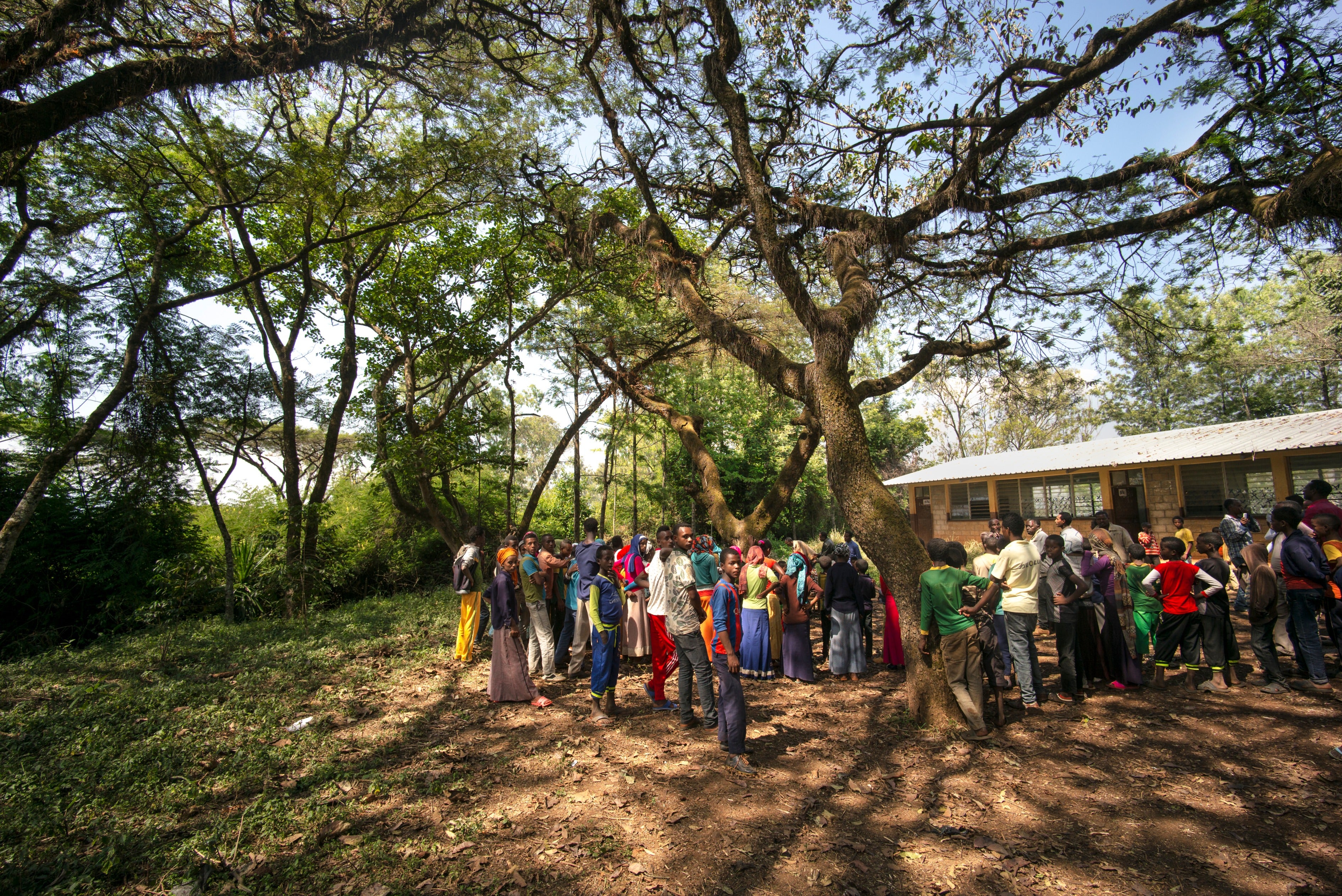 5)External factors can make or break a good profit margin
5)External factors can make or break a good profit margin
Like all agricultural produce, coffee farming has inherent risks. The income that farmers can earn is based on yield and the market price. Even when a selling price is agreed, and considered to represent a considerable improvement, other factors can influence how much farmers earn. Coffee trees are biennial bearing, where they carry a heavy crop one year and very little the next, which has a dramatic effect on farmers income. Then there are the vagaries of weather, pests and diseases.
Also, export prices are contracted in US dollars, whereas farmers get paid in the local currency (Ethiopian Birr). The impact of a fluctuating exchange rate, or interest rates on loans on coffee farmer income cannot be underestimated.
The study demonstrated a link between improved incomes from specialty coffee and thus the potential for maintaining biodiversity-positive forest-based farming. One of the main contributors to climate change and biodiversity loss is deforestation. Study after study has shown that climate change is one of the biggest threats to the coffee industry. Rising temperatures will bring drought and increases in the range and severity of pests and diseases.
Large landowners are often the first that come to mind, when thinking about deforestation. Yet this diminishes the role of smallholder farmer. Their activities can impact forests, positively and negatively. In many cases, such as Yayu, these forests provide livelihood security and other key benefits.
For the future of coffee, for Ethiopia and beyond, it is important to help and incentivise farmers preserve forests. Just telling farmers to protect the forest is not likely to be effective. Growing coffee under the forest canopy, or in association with the forest, needs to be profitable and sustainable.
This work was supported by the Darwin Initiative (UK; DFiD), ref. no: 2 2-006
Pascale Schuit, Union Hand-Roasted Coffee, London, UK

